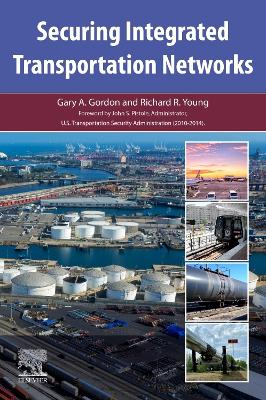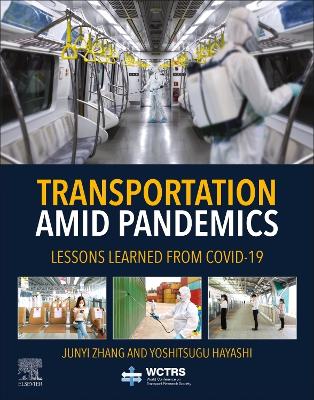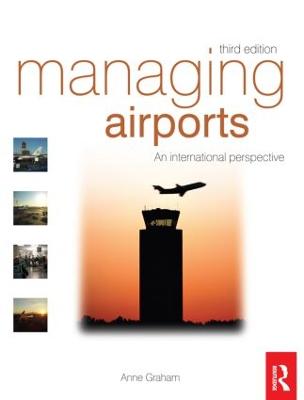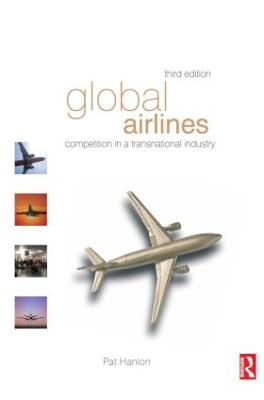Air Transportation Industry
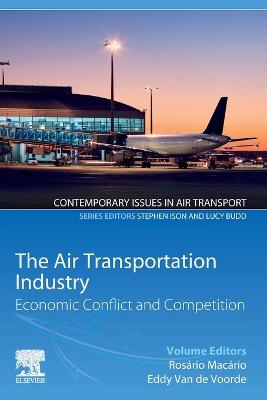 -10%
portes grátis
-10%
portes grátis
Air Transportation Industry
Economic Conflict and Competition
Van de Voorde, Eddy; Macario, Rosario
Elsevier - Health Sciences Division
11/2021
474
Mole
Inglês
9780323915229
15 a 20 dias
770
Descrição não disponível.
1. Economic structure of the air transport business
2. The burden of a ton CO2! Emission trading systems and the air transport business
3. Labour in the aviation industry: Wages, disputes, and shocks
4. The air transportation vertical channel, the global value added and the role played by private vs public control
5. Exogenous shocks on air transport business: the effects of a global emergency
6. The impact of regulation on the airport industry: the Italian case
7. Airline pricing, incumbents and new entrants
8. The fight for airport slots: the case of Amsterdam Airport Schiphol
9. Different approaches to airport slots. Same results, same winners?
10. Black Swans or gray rhinos on the runway? The role of uncertainty in airport strategic planning
11. Making sense of airport security in small and medium-sized airports
12. How can airports influence airline behavior to reduce carbon footprint?
13. The measurement of accessibility and connectivity in air transport networks
14. Fighting for market power: the case of Norwegian airlines
15. Is privatization of ATC an economic game changer? Who gains and who loses?
16. The forwarders power play effect on competition in the air cargo industry
17. Fuel hedging: how many games can we play?
18. The effect of accidents on aircraft manufacturers' competition
19. How strategy can influence the market: recommendations and conclusions
2. The burden of a ton CO2! Emission trading systems and the air transport business
3. Labour in the aviation industry: Wages, disputes, and shocks
4. The air transportation vertical channel, the global value added and the role played by private vs public control
5. Exogenous shocks on air transport business: the effects of a global emergency
6. The impact of regulation on the airport industry: the Italian case
7. Airline pricing, incumbents and new entrants
8. The fight for airport slots: the case of Amsterdam Airport Schiphol
9. Different approaches to airport slots. Same results, same winners?
10. Black Swans or gray rhinos on the runway? The role of uncertainty in airport strategic planning
11. Making sense of airport security in small and medium-sized airports
12. How can airports influence airline behavior to reduce carbon footprint?
13. The measurement of accessibility and connectivity in air transport networks
14. Fighting for market power: the case of Norwegian airlines
15. Is privatization of ATC an economic game changer? Who gains and who loses?
16. The forwarders power play effect on competition in the air cargo industry
17. Fuel hedging: how many games can we play?
18. The effect of accidents on aircraft manufacturers' competition
19. How strategy can influence the market: recommendations and conclusions
Este título pertence ao(s) assunto(s) indicados(s). Para ver outros títulos clique no assunto desejado.
Accessibility indicators; Air freight; Air industry; Air transport networks; Air transport supply; Aircraft manufacturers; Airline competition; Airline networks; Airlines; Airport airside capacity management; Airport capacity; Airport competition; Airport regulation; Airport slot allocation; Airport slot auctions; Airport strategic planning; Airport-airline relationship; Airports; Amsterdam Airport Schiphol; ANS; ANSPs; ATC; Aviation accidents; Aviation; Black swans; Business models; Capacity constraints; Carbon footprint; Commercialization; Competition; Concentration ratios; Connectivity; Cost estimation; COVID-19Deep uncertainty; CR4Freight forwarders; Deregulation; Developments; Duopolistic competition; Economic shocks; Economic structure; Efficiency; EU Slot Regulation; Excess demand; Fuel hedging; Globalsanitary emergency; HHI; Impact assessment; Impact reduction; Incentives; Incumbent; Labor; Low-cost airlines; Market analysis; Market aviation recovery; Market power; Market shares; Marketactors; Market-based measures; Market-based mechanisms; Multinational airlines; Negotiation; Norwegian airline industry; Pricing; Privatization; Regulation; Risk management; Scenarios; Single European Sky; Slots; Strategies; Transparency; Unions; Volatility; Wages
1. Economic structure of the air transport business
2. The burden of a ton CO2! Emission trading systems and the air transport business
3. Labour in the aviation industry: Wages, disputes, and shocks
4. The air transportation vertical channel, the global value added and the role played by private vs public control
5. Exogenous shocks on air transport business: the effects of a global emergency
6. The impact of regulation on the airport industry: the Italian case
7. Airline pricing, incumbents and new entrants
8. The fight for airport slots: the case of Amsterdam Airport Schiphol
9. Different approaches to airport slots. Same results, same winners?
10. Black Swans or gray rhinos on the runway? The role of uncertainty in airport strategic planning
11. Making sense of airport security in small and medium-sized airports
12. How can airports influence airline behavior to reduce carbon footprint?
13. The measurement of accessibility and connectivity in air transport networks
14. Fighting for market power: the case of Norwegian airlines
15. Is privatization of ATC an economic game changer? Who gains and who loses?
16. The forwarders power play effect on competition in the air cargo industry
17. Fuel hedging: how many games can we play?
18. The effect of accidents on aircraft manufacturers' competition
19. How strategy can influence the market: recommendations and conclusions
2. The burden of a ton CO2! Emission trading systems and the air transport business
3. Labour in the aviation industry: Wages, disputes, and shocks
4. The air transportation vertical channel, the global value added and the role played by private vs public control
5. Exogenous shocks on air transport business: the effects of a global emergency
6. The impact of regulation on the airport industry: the Italian case
7. Airline pricing, incumbents and new entrants
8. The fight for airport slots: the case of Amsterdam Airport Schiphol
9. Different approaches to airport slots. Same results, same winners?
10. Black Swans or gray rhinos on the runway? The role of uncertainty in airport strategic planning
11. Making sense of airport security in small and medium-sized airports
12. How can airports influence airline behavior to reduce carbon footprint?
13. The measurement of accessibility and connectivity in air transport networks
14. Fighting for market power: the case of Norwegian airlines
15. Is privatization of ATC an economic game changer? Who gains and who loses?
16. The forwarders power play effect on competition in the air cargo industry
17. Fuel hedging: how many games can we play?
18. The effect of accidents on aircraft manufacturers' competition
19. How strategy can influence the market: recommendations and conclusions
Este título pertence ao(s) assunto(s) indicados(s). Para ver outros títulos clique no assunto desejado.
Accessibility indicators; Air freight; Air industry; Air transport networks; Air transport supply; Aircraft manufacturers; Airline competition; Airline networks; Airlines; Airport airside capacity management; Airport capacity; Airport competition; Airport regulation; Airport slot allocation; Airport slot auctions; Airport strategic planning; Airport-airline relationship; Airports; Amsterdam Airport Schiphol; ANS; ANSPs; ATC; Aviation accidents; Aviation; Black swans; Business models; Capacity constraints; Carbon footprint; Commercialization; Competition; Concentration ratios; Connectivity; Cost estimation; COVID-19Deep uncertainty; CR4Freight forwarders; Deregulation; Developments; Duopolistic competition; Economic shocks; Economic structure; Efficiency; EU Slot Regulation; Excess demand; Fuel hedging; Globalsanitary emergency; HHI; Impact assessment; Impact reduction; Incentives; Incumbent; Labor; Low-cost airlines; Market analysis; Market aviation recovery; Market power; Market shares; Marketactors; Market-based measures; Market-based mechanisms; Multinational airlines; Negotiation; Norwegian airline industry; Pricing; Privatization; Regulation; Risk management; Scenarios; Single European Sky; Slots; Strategies; Transparency; Unions; Volatility; Wages

